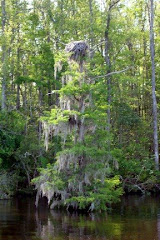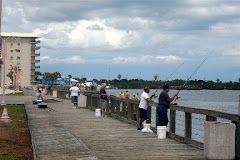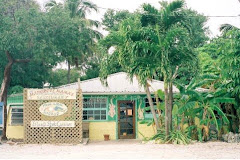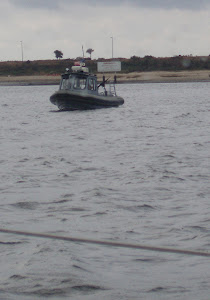Another cold front with small craft advisories and strong gusting winds is passing through. We’ve chosen to stay put and enjoy Georgetown's restaurants, museums, and tours. The area is rich in history.
Georgetown became a port of entry in 1732. Indigo and rice were the major crops. Slaves from Africa taught the plantation owners how to grow rice and harvest indigo. By the 1840’s, almost half the rice consumed in the U.S. was grown in the lowlands around Georgetown. The seaport exported more rice than any other port in the world. Indigo and “Carolina Gold” rice spawned the affluent genteel culture associated with the old South. The plantations required enormous amounts of hand labor to operate, and slaves comprised 85% of the population. The labor required to turn a cypress swamp into a working rice field was likened to building one of the Great Pyramids.
To escape “bilious disease” (malaria) carried by the mosquitoes, plantation owners built summer homes in Georgetown. The slaves, largely unaffected by the disease, remained on the plantations working the fields and protecting the rice. An entire crop of rice could be consumed by bobolink birds in one day; children were put in the fields to scare the birds away by banging pots and pans, bells, and whistles.
Wealthy plantation owners imported many things from Europe such as china, crystal, fabrics, and furnishings. Ships coming from England used bricks for ballast. Since rice and indigo provided ballast for the return trip, Colonists used the English ballast brick for buildings.
Georgetown architecture is unique. At one point, colonists were taxed on the number of feet their home faced the street and the number of doors within the house. To diminish their taxes, many of them built their homes sideways and eliminated closets. Small cookhouses were separate from the main house to diminsh the risk of fire from grease. Homes near the waterfront faced the harbor and their back porches faced the street. The porches are so nice, Bob and I hadn’t noticed that until we heard it during a tour.
There were 160 plantations in Georgetown County in the mid-1800’s. Only one remains. Many of them are now golf courses or golf communities. Georgetown is now rated among the top 100 small towns in America.
Today was brisk. We enjoyed walking the waterfront and dining at “The Rice Paddy,” a great restaurant now occupying the old bank building. Before we leave, I plan to pick up some fresh local shrimp at the Independent Fish Market. They have a resident egret named “Wilbur” and a resident heron named "Gus."
Friday, November 16, 2007
Subscribe to:
Post Comments (Atom)










































































































































































































1 comment:
We flew through Georgetown and were sorry to miss much of what it had to offer. I wonder did you get a chance to visit the Rice Museum. The exterior intrigued us, but we were unable to visit.
I am looking forward to reading about Georgia and Florida as we never made it that far.
Post a Comment